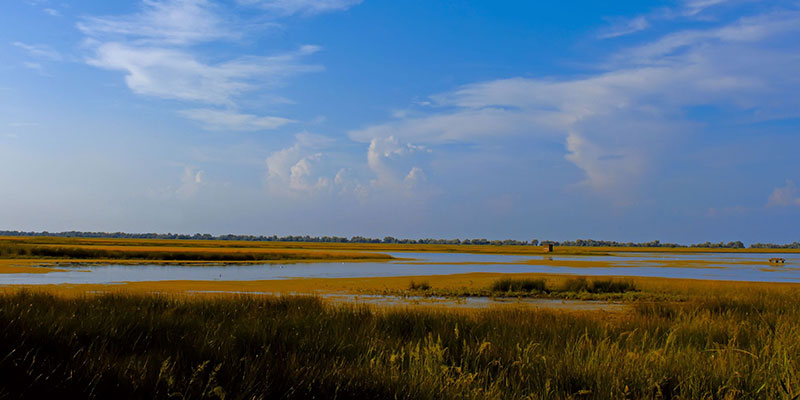In coastal regions, it has long been known that overpumping of aquifers can lead to saline intrusion, but salt levels are going up even in inland groundwater. Can desalination help?
30 years of data show salinity of groundwater increasing even far from coasts
After 30 years of monitoring wells, the latest U.S. Geological Survey (USGS) research shows groundwater across the nation is becoming saltier. It has long been known that seawater can intrude when coastal aquifers become depleted and sea levels rise, but the most recent research throws light on saline intrusion far inland.
USGS sampled groundwater to identify contamination trends in domestic, urban, and agricultural areas. Unregulated, private domestic wells typically tap into medium-depth groundwater, but urban and agricultural wells are generally only 30 to 50 feet deep, making them a good indicator of what is entering the aquifer.
Increased Groundwater Salinity Culprits
The data on groundwater salinity has now been compiled into an interactive map. According to USGS hydrologist Bruce Lindsey:
If we look at all 28 constituents across all 82 networks, dissolved solids, chloride, and sodium had statistically significant increases more frequently than any other constituents that we have on our list. If you look at the map, you’ll see patterns right away that jump out.
For instance, Northeastern and Upper Midwestern urban regions that experience cold winters showed an increase in groundwater salinity, and the team was able to tie it to increased application of salt to icy roads to increase traction.
In the Southwest, salinity is higher naturally. When growers irrigate crops in these regions, more water evaporates, leaving the water that percolates into aquifers more saline.
Harmful Effects of Rising Salinity Far Inland
Higher levels of salt and other contaminants can have a devastating impact on ecosystems. When streams are fed with groundwater, higher chloride levels can disrupt the balance upon which aquatic life depends, and it may take as long for balance to return as it took for harmful levels to build up.
Dissolved salt can also corrode metal pipes and stir up radioactive contaminants.
While salt application has been moderated, and cities are using less concentrated brine, the research team hopes the new data will shine light on other interconnected impacts of rising groundwater salinity and lead to more action in the future. But the study has finally put the emergence of inland saline intrusion center stage, a position usually reserved for coastal saline intrusion.
Coastal Saline Intrusion an Increasing Problem
Coastal saline intrusion is well-documented, dramatic, widespread, and not going away. A recent study in the journal Nature found coastal groundwater levels along more than 15% of the contiguous U.S. coastline lie below sea level. More than 18% of the East Coast, 17% of the Gulf Coast, and overpumped West Coast regions are vulnerable. Rising sea levels, ground subsidence, and climbing water demand will also make the threat of coastal seawater intrusion even greater in the future, the study warned.
This year, drought in the Midwest also led to the highly publicized intrusion of salt water 70 miles up the Mississippi River, almost to the New Orleans drinking-water intakes, prompting the city to consider desalination. But lower-profile saline intrusion happens in rivers and coastal aquifers all the time. As sea levels rise and coastal communities withdraw more water from aquifers, seawater seeps in to fill the underground void. Once an aquifer is contaminated with salt, it becomes unusable for the foreseeable future.
Amidst the escalating challenge of rising groundwater salinity, particularly highlighted by the recent 30-year study conducted by USGS, the role of desalination, especially through reverse osmosis technology, offers hope.
Desalination’s Role in Fighting Saline Intrusion
As various regions grapple with increased salt content in groundwater, reverse osmosis stands out as a powerful and efficient desalination process capable of mitigating saline intrusion.
Reverse osmosis systems use semipermeable membranes to selectively remove salts and impurities from water. Coastal areas benefit significantly from seawater reverse osmosis (SWRO), a specific application of reverse osmosis effective for water with high salt content. SWRO provides a sustainable source of drinking water, thereby lessening reliance on groundwater overpumping, which can exacerbate saline intrusion. Because saline intrusion is costly and challenging to remediate, it’s preferable to stop coastal aquifer depletion and saline intrusion before they start. Meeting freshwater demand with SWRO can do just that.
Beyond coastal regions, brackish water reverse osmosis (BWRO) can be an effective solution. This variation of reverse osmosis is remarkably efficient and cost-effective, transforming brackish groundwater into usable irrigation or drinking water. BWRO not only contributes to water resource management, but also aids in the environmental goal of removing excess salt from affected areas.
Fluence is an expert in desalination on all scales, from small, modular units like NIROBOX™, which are fit for decentralized applications, to large-scale regional desalination plants. With the power of PPP, BOO, and BOOT contracts through our Water Management Services, Fluence can deliver desalination with unprecedented flexibility.
As communities grapple with the consequences of increasing groundwater salinity, the time-tested and proven efficiency of reverse osmosis desalination stands as an invaluable asset. Fluence, with its comprehensive suite of desalination solutions, remains committed to empowering regions worldwide with the means to combat saline intrusion, ensuring the sustainable and responsible management of precious water resources. Contact Fluence today to explore the diverse desalination options tailored to your specific needs.

